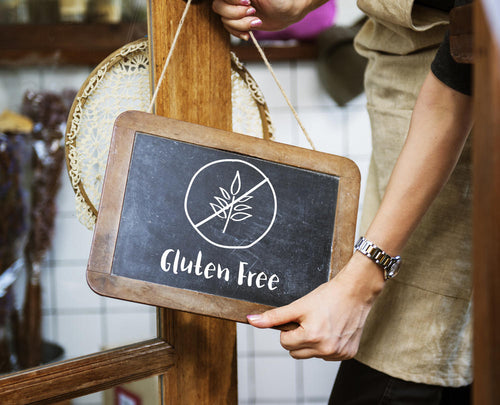Gluten can be a friend or a foe, depending on the person. If you suffer from celiac disease, or have a sensitivity towards gluten, a diet free of the natural protein is the safest route.
Gluten is a combination of proteins found in cereal grains such as wheat, barley, and rye, making it a key ingredient in many popular foods. However, that doesn’t stop gluten-free eaters from enjoying their own take on them. Recipes can be concocted in a myriad of ways that incorporate substitutes that sync well with the body.
That’s where we come in. Our egg wraps made with gluten-free grains can jumpstart your journey towards eating joyfully. Let’s talk about the foods you can eat on a gluten-free diet, and how our wraps could be versatile building blocks of your recipes.
Some Whole Grains
We know hearing “whole grain” may seem like an anomaly, but there are only a few gluten-clad grains to steer clear from, like barley and rye. Surely regularly made pasta, pizza, breads, and pastries won’t be on your shopping list, but grocery stores carry many gluten-free options using alternative flours that are packed with nutrients and antioxidants– and are agreeable with the stomach. With the help of our egg wraps used as a crust, delicious pizza can even become a part of your weekly meal routine. Bake the crepini to a crisp, add a layer of sauce, sprinkle on cheese, and top with your favorite vegetables or meats for a comfort food staple.
Here are gluten-free grains to look out for in ingredients, cook alone as a dish, or use within recipes:
- Brown rice
- Wild rice
- Quinoa
- Oats
- Buckwheat
- Sorghum
- Tapioca
- Amaranth
- Teff
- Millet
- Arrowroot
Always remember to carefully read the ingredients list and take notice of gluten-free labels on products to be sure there was no cross contamination in its processing.
Unprocessed Proteins
Fresh proteins are a large member of the gluten-free family, as all of them contain no gluten whatsoever. Instances to avoid or take caution are with processed meats (sausage, pepperoni, bacon), lunch meats, meat substitutes, ground meat, and frozen premade meat. Any meats that are marinated in soy sauce bases could also be harmful for a gluten-free diet.
Here are proteins to incorporate into your meals:
- Seafood (fresh fish, shellfish, scallops)
- Poultry (fresh chicken and turkey)
- Red meat (fresh beef, pork, lamb, bison)
- Legumes (beans, peas, lentils)
- Nuts and seeds
- Soy foods (tofu, tempeh, edamame)
Using any of these protein choices in your meals could lead to creative recipes throughout your week, and even your day. You can use our egg wraps to supplement your protein and add texture that you wouldn’t believe is gluten-free. Try crisping the rounds as a base to make a tostada that you top with your choices of proteins, vegetables, cheeses, and sauces. There are endless possibilities that can keep both your taste buds and digestive systems happy. .
Fresh Fruits and Veggies
Like proteins, fresh fruits and veggies are friends of the gluten-free diet. None of them contain finicky gluten and can all be consumed easily. It’s crucial to double-check the ingredients on products created in the fruit and vegetable realm. Some pre-chopped and processed produce may contain extra sauces and flavorings that could include gluten-containing elements and are better to avoid.
Here are some processed fruit products that are typically gluten-free:
- Canned fruits/vegetables in water or natural juices
- Frozen fruits/vegetables with no flavoring or sauces
- Dried fruits/vegetables that are plain and unsweetened
Another gluten-free way to enjoy your fresh produce is using our egg wraps as an added crunch. Simply bake them into muffin tins to form the perfect edible bowl for any sweet or savory concoction and enjoy as a snack or part of any meal.
Dairy
Another naturally gluten-free favorite is dairy, and mainly all products that come along with it. Much like other gluten-friendly foods, dairy may only be harmful if you happen to be lactose-intolerant or sensitive or when it is flavored with additives like malt or modified food starch. This means you should be cautious of flavored milks or yogurts, processed cheese spreads, and ice cream. When it comes to incorporating dairy into your gluten-free diet, it’s helpful to stick to the basics.
Here are dairy products you can eat on their own or use as delicious ingredients:
- Milk
- Cream
- Cheeses
- Yogurt
- Sour cream
- Cottage cheese
Fats and Oils
You heard that correctly– fats are no foe to gluten. Akin to the others, they are naturally gluten-free and are only harmful when used as a spray, or when mixed with additives for flavor and thickening. These fats and oils are mainly ingredients used to incorporate into the cooking of your gluten-free diet and will provide meals that are far from tasteless.
Here are the fats and oils to add to your gluten-free culinary experience:
- Butter/Ghee
- Olive oil and olives
- Avocado oil and avocados
- Coconut oil
- Vegetable and seed oils
If your body is asking for less gluten, it’s crucial to listen and learn. Using the substitutes available and the range of gluten-free foods available, there are countless directions to go in when it comes to making recipes you’ll enjoy. Navigating a new diet isn’t as difficult as it may seem, and our egg wraps can provide the taste and texture your gluten-free meals are craving.



